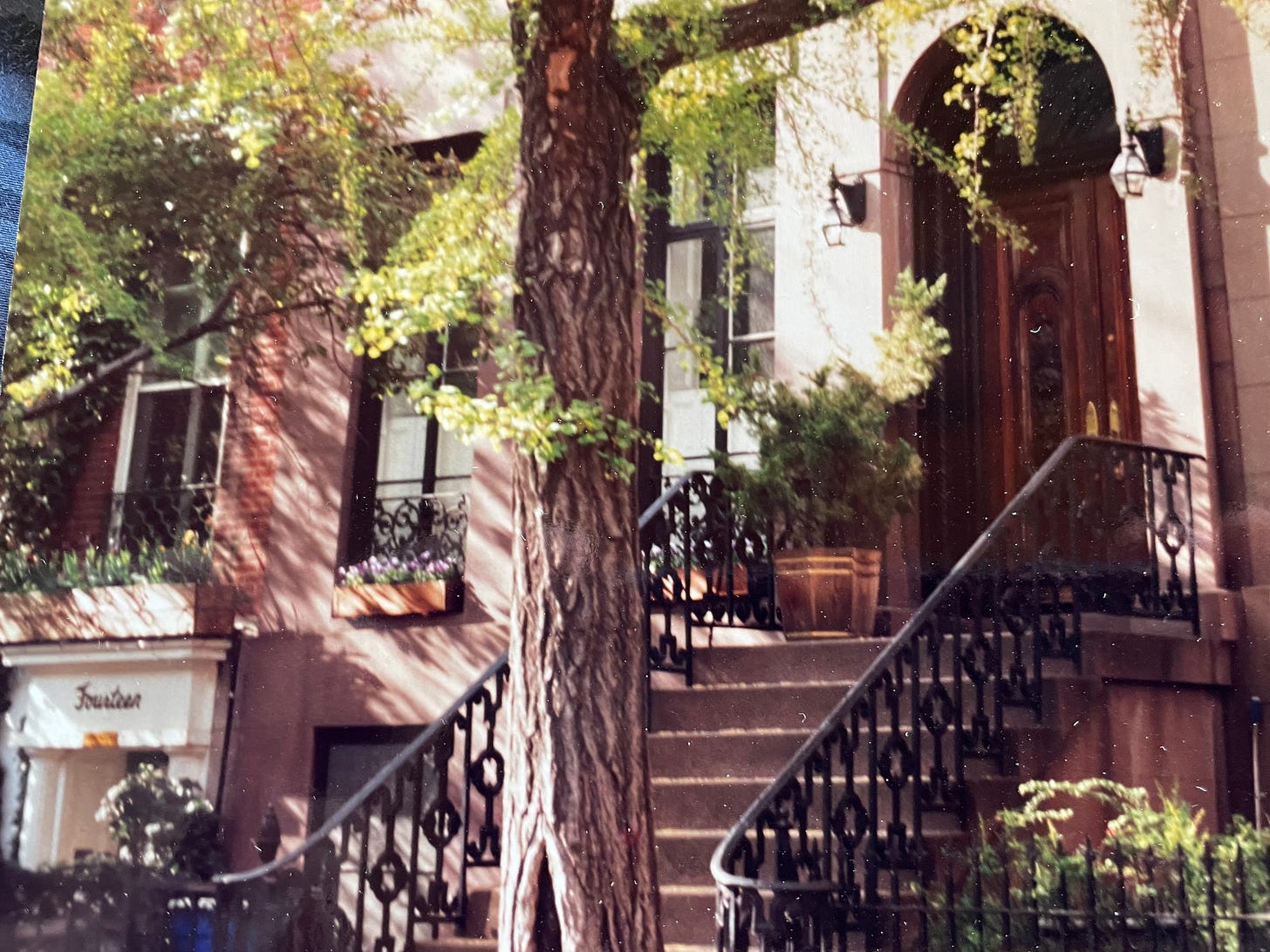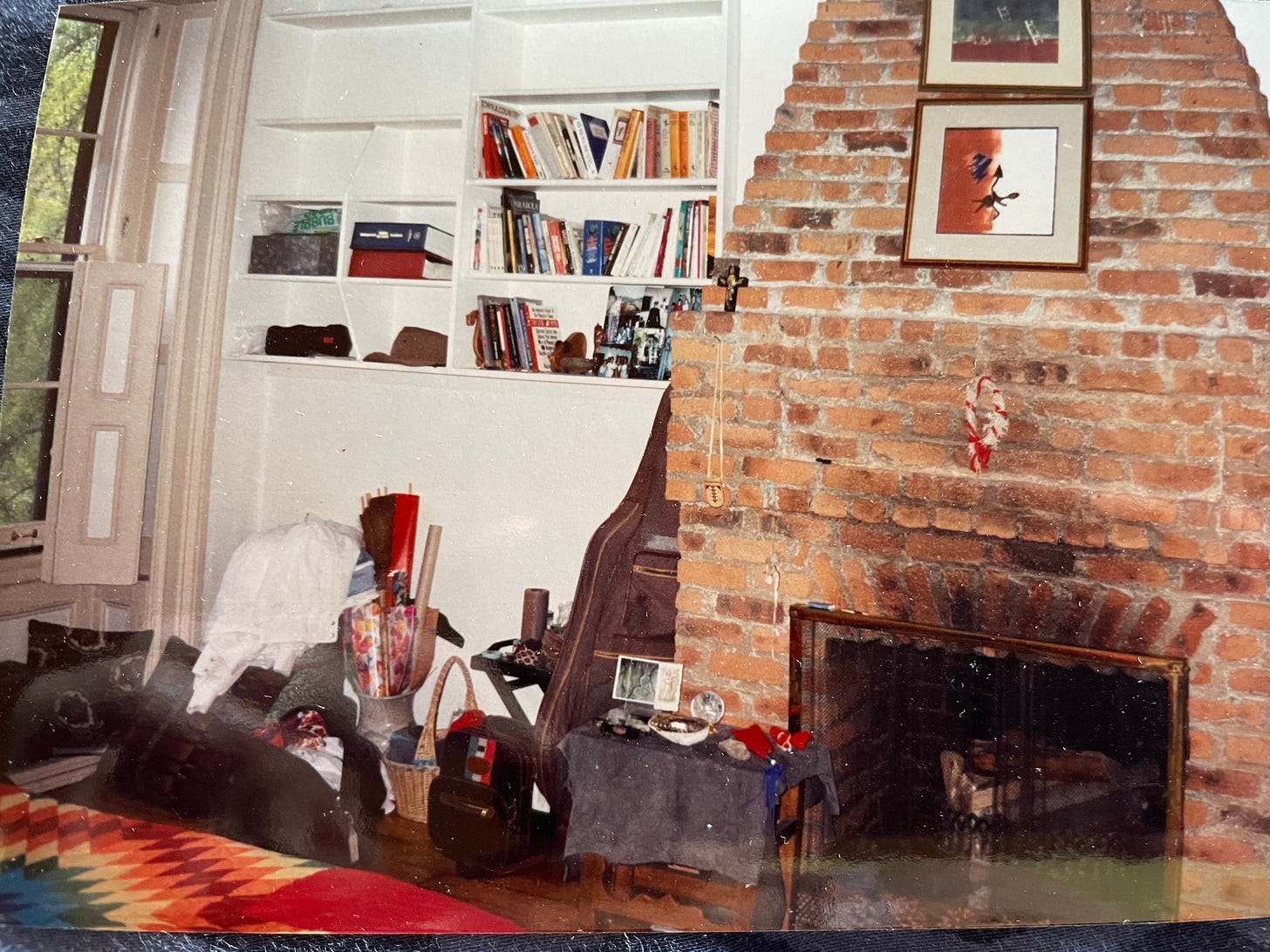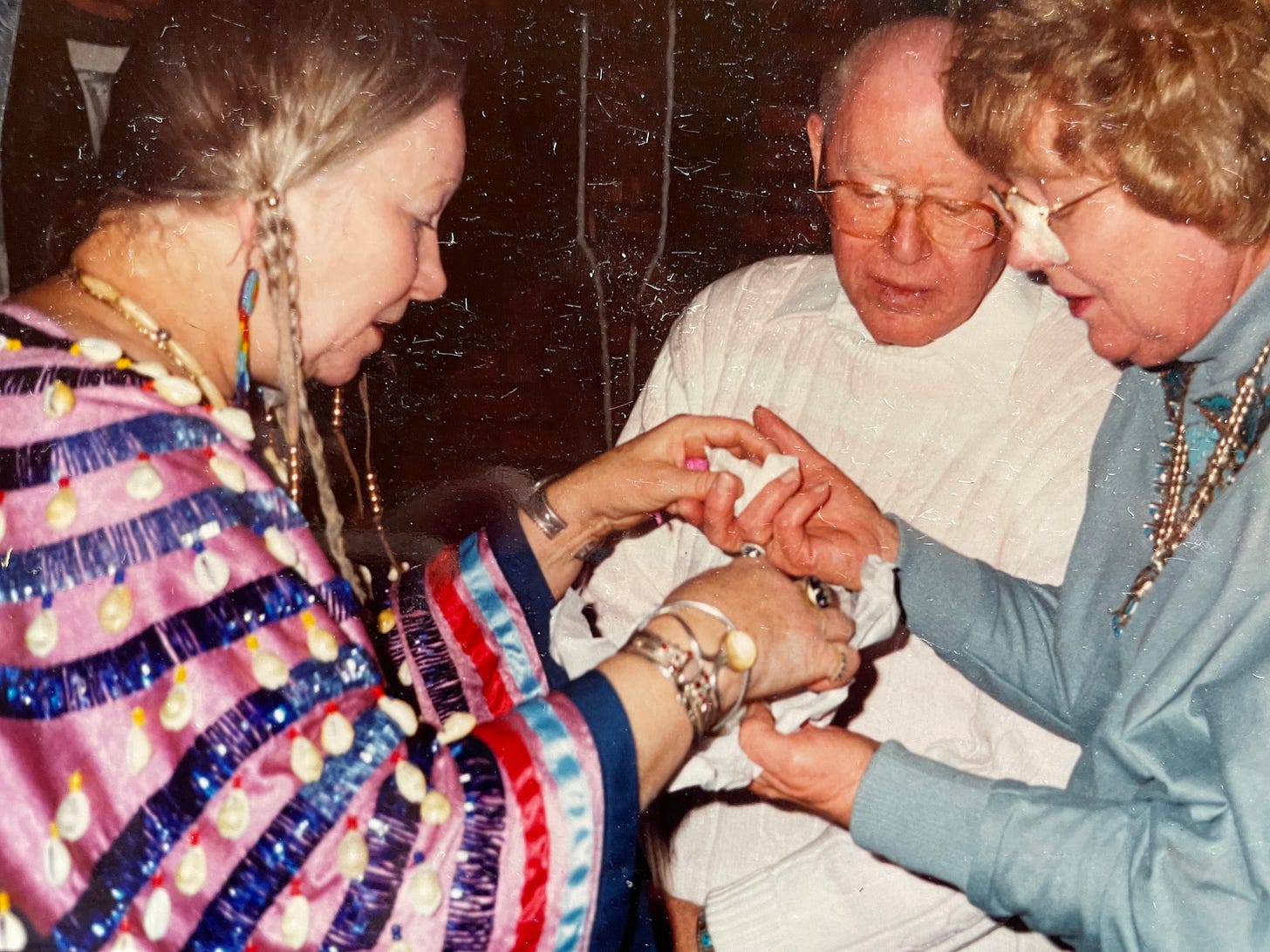I turned 65 in 2021. In the months around my milestone birthday I found myself giving serious thought to where I should spend the next three decades or so of my life. The more I thought about “where” the more I realized the first question should be “what” – or more precisely, “for the sake of what?”. Before I could know with certainty where my home should be, it was fundamental to understand what home is to me. What did I intend to create there?
This inquiry led me to realize when I was happiest with my home, I was doing what my parents had always done. (And luckily, I was in fact already doing it then, just not exactly where I wanted to be doing it.) Not the part where they raised and provided for three children, although they did that well. The home I longed to create was the context in which we grew up, which continued even after we had flown the proverbial nest. Frank and Vera provided a sanctuary, a salon, a door open to all with a bed and a hot breakfast included, if needed.
The first time I was really conscious of this was in my middle school years. We lived in Greeley, Colorado, a rural high plains town my dad described as having two anchors, the college and the feedlots, with the same end product: a lot of bullshit. Both my parents taught at the college. Greeley was politically and religiously conservative, a dry town where the nearest bar for a Friday night TGIF beer was just the other side of the tracks and city limits. There were no people of color on the Colorado State College faculty. Every campus club needed a faculty sponsor, and my parents sponsored the Black-Brown Coalition, the Hawaiian Club, and the Free University. They finished our basement with the requisite “rec room” and additional bedrooms, and at times that space overflowed with people and conversations. Conversations about identity, agency, culture, social change, the reverberations of The Summer of Love and the Paris student protests of May 1968.
The brownstones of Saint Lukes Place, West Village, Manhattan.
My apartment at 16 Saint Lukes Place, a parlor floorthrough in a brownstone in Manhattanʻs West Village, was the first place I recreated my parentsʻs rec room. That apartment is as much a character in these stories as any of the people are. It had a story before me, surely lots of stories beginning with its birth sometime around 1852 or 1853, some of which I learned when I moved in nearly 140 years later.
There are fifteen brownstones numbered 3 to 17 on the north side of the treelined, one way, one block lane where Leroy Street magically becomes Saint Lukes Place. On the south side is a branch of the New York Public Library, flanking James J. Walker Park. Some of the famous residents, past and current, were and are of what was once called “the merchant class”. Many others were and are creative types. Perhaps 16 Saint Lukes Place itself was searching for someone like me to write some new chapters there: a youngish Wall Street banker whose friends looked like the United Nations and increasingly included a diverse mix of artists, performers, and writers.
I have a knack for finding cool spots to perch. Before my divorce I lived in a waterfront loft right next to the ferry terminal on Staten Island. Large picture windows framed a spectacular view of Manhattan with the Hudson River on one side and the East River on the other, the lights sparking from the Colgate sign on the New Jersey shore all the way to the Verrazano-Narrows bridge connecting my island with Brooklyn, the long way home if I missed the last ferry at midnight.
I loved my view, my neighbors, and the peaceful setting. It was my sweet retreat after intense episodes of work and work travel. However, if I intended to have any reasonable chance at a social (meaning dating) life, moving back into Manhattan seemed like a good idea. I mentioned this to my dear friends Frank and Maryann Arisman, whose West Village lifestyle I envied and emulated one summer with a sublet they found for me. And then they had a postcard in the mail from one of their neighbors on St Lukes Place. Their neighbors at #16 had a vacancy in the apartment above the two floors they occupied, and were looking for a new tenant by word of mouth.
My bedroom at Saint Lukes Place - a star quilt on the bed, brick fireplace and built-in bookshelves
My new apartment had a modern kitchen and bath but all of its 19th century detail intact: arched doorways, a working brick fireplace in the living room and another in the bedroom, original hardwood floors. There was the bonus of a small office behind the bedroom, where I imagined Theodore Dreiser wrote his novel An American Tragedy during his time at 16 Saint Lukes Place. This charming setting was the backdrop for many of the stories Iʻve told from 1992 (and those alluded to as having happened in 1991). When my Lakota friends came into the City, itʻs where they stayed. When in the month after my trip to Tibet I walked slowly, meditatively, every evening from my office on Wall Street through Chinatown, Soho and the Village, this where I opened the door at the end. When I was stuck in Brazil over Thanksgiving 1992, Lee Anne and Jennifer took care of Paula and her newborn son Decorah there.
Early 1993, then, finds me commuting every two weeks between this art-filled apartment on Saint Lukes Place, and my art-filled apartment on Alameda Min. Rocha Azevedo. At work, I was trying to convince the markets to accept solid Brazilian borrowers even as the new President was being impeached and the economy self-distructing. At home, the challenge was making time for a social life and inner life in two places. And somehow I was still managing to fit in trips to the new house in Manitou Springs.
Oh Shinnah with my dad Frank and mom Vera preparing the wedding ceremony for my friends at our house in Manitou Springs
Here is one story illustrating how that worked. Friends of mine from Sao Paulo decided to get married. They had heard me talk about Oh Shinnah and wondered if it would be possible to have her perform their ceremony, and then honeymoon in the American Southwest. Thatʻs what we did. We flew together into Denver, where my father naturally agreed to walk my friend down the aisle. Cynthia flew in from San Francisco for what would be a wedding and housewarming at our house in Manitou Springs, as long as we were at it. Co-hosting a wedding was a little too intense for my boyfriend as we were approximately halfway to his pre-announced expiration date, but Américo agreed to join us on the honeymoon in Taos, after which we all flew back to New York where my Brazilian friends continued to play while I went back to work.
I was young and got by on very little sleep.
I was still faithful about my morning routine of meditation, prayers and exercise - easy runs along the Hudson River, or workouts at the Club when in São Paulo. And I was still diligently pursuing fluency in Portuguese. Waiting for my flight to New York at the end of 1992, I browsed a display of paperbacks at the airport newstand. Four of the top ten bestsellers were by the same author, Paulo Coelho. After six months of lessons, I should be able to try reading one, I mused. I read the cover blurbs. The most recently published, As Valkirias (The Valkyries), was set in the Mojave Desert and maybe I could figure out more of the unfamiliar vocabulary by context since I knew the setting. I bought the book. And so began one of my big stories of 1993 and beyond.






